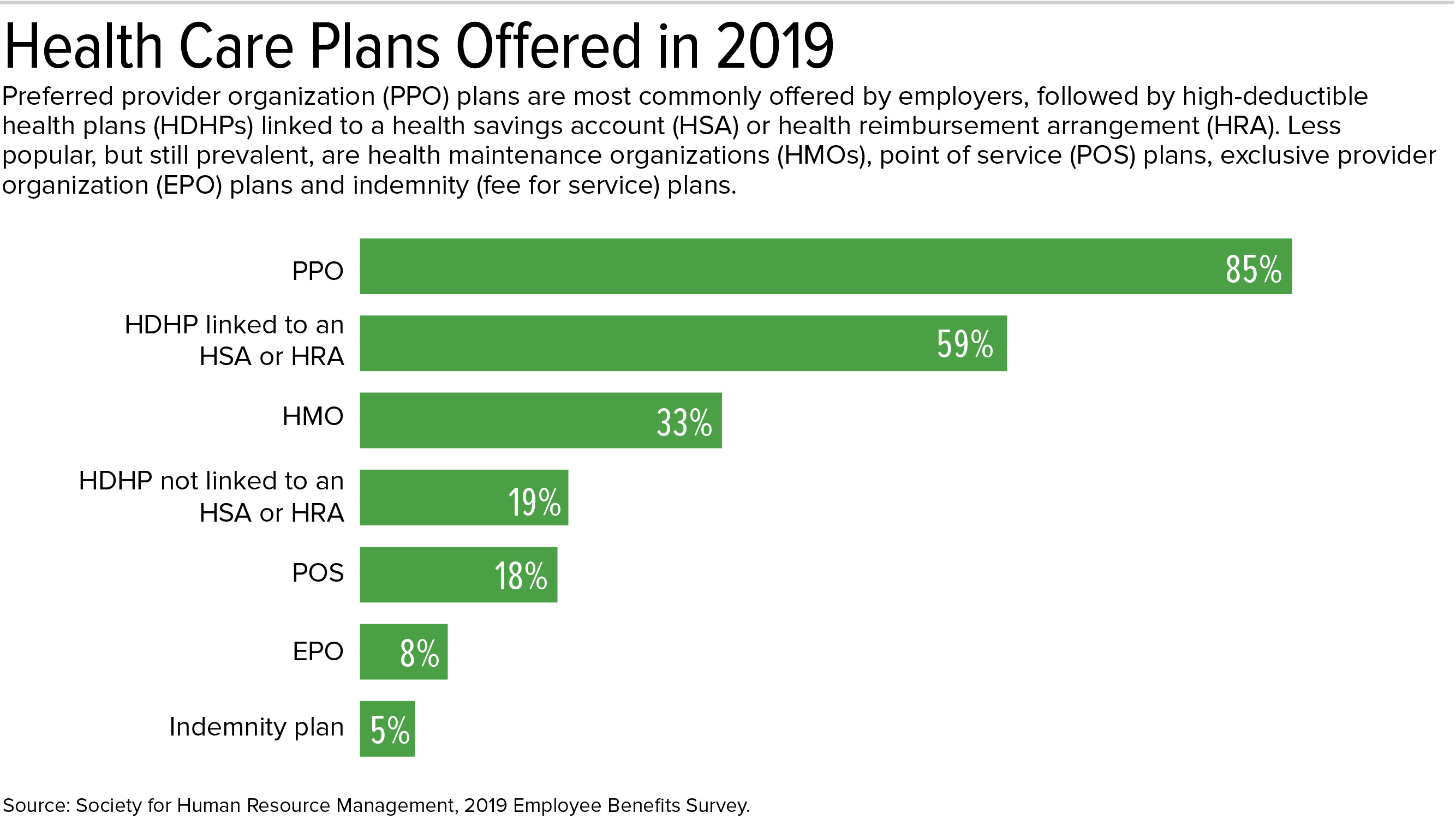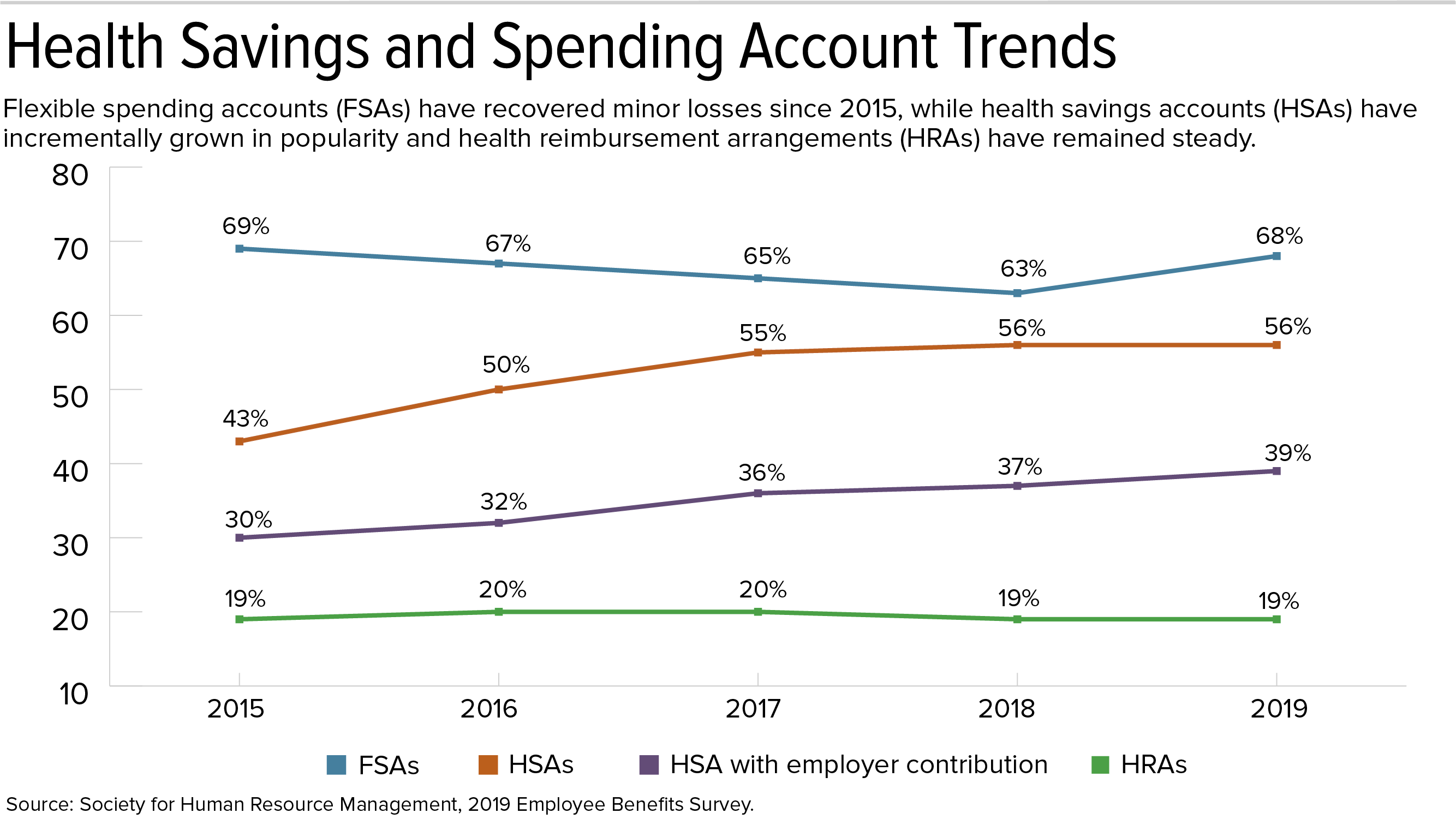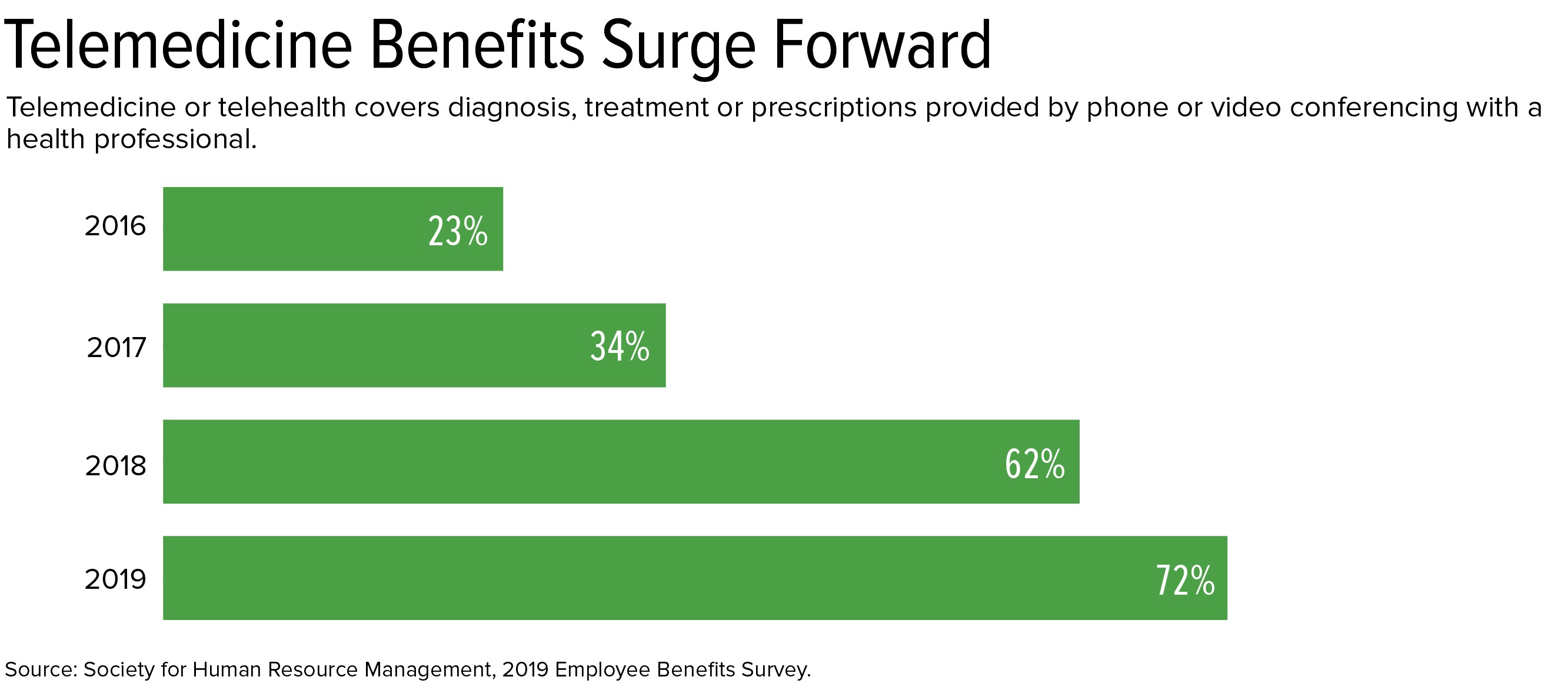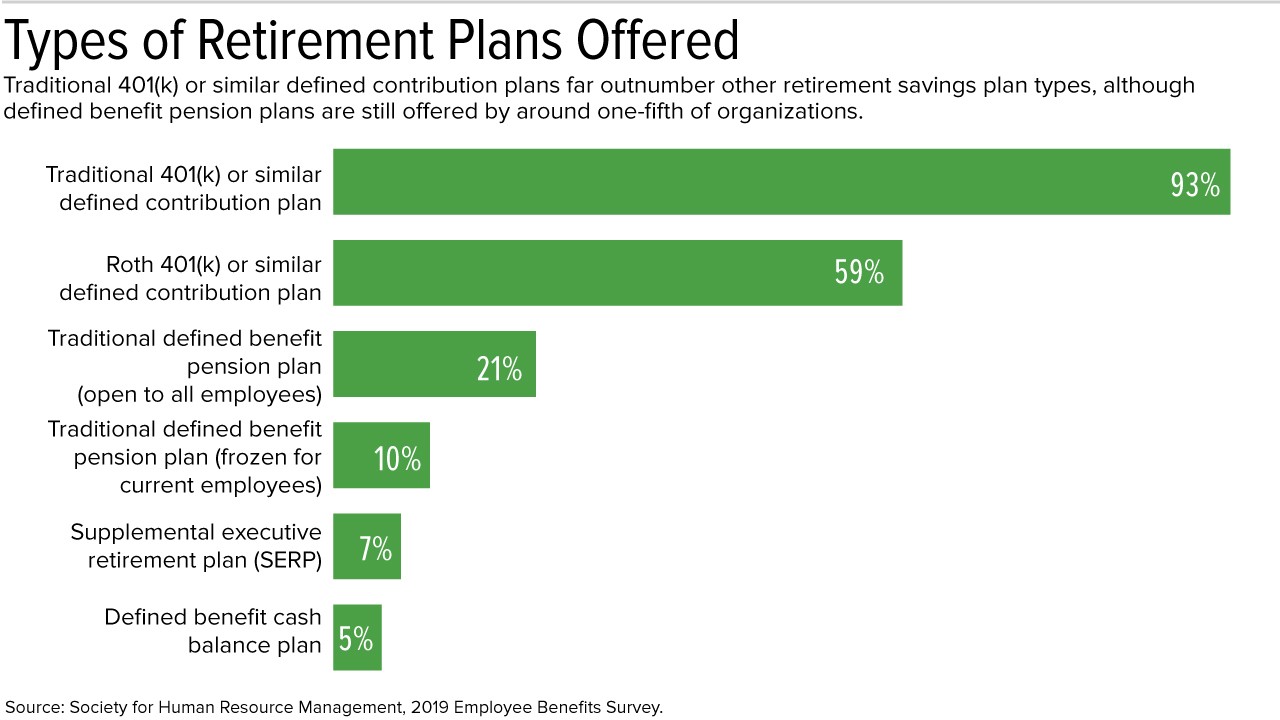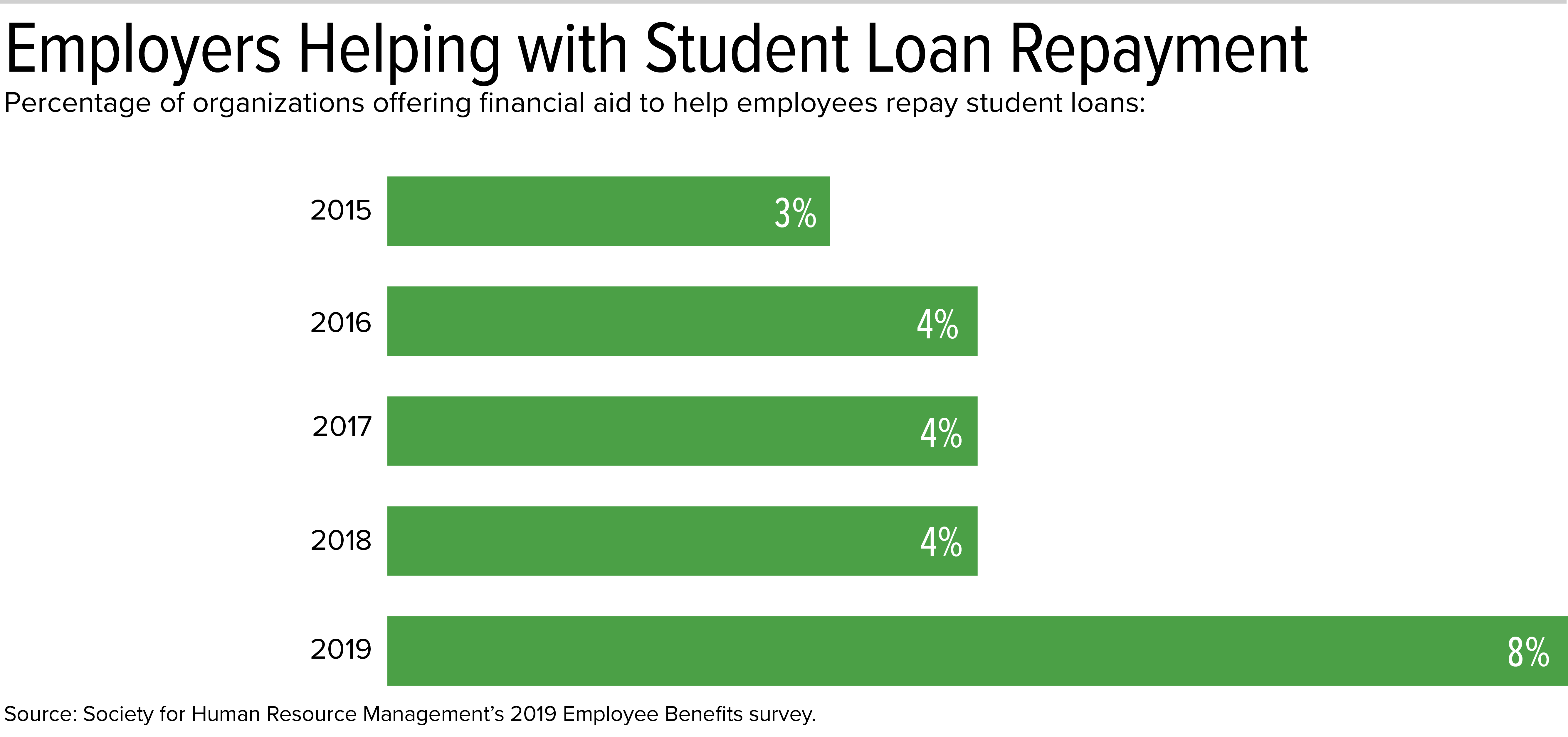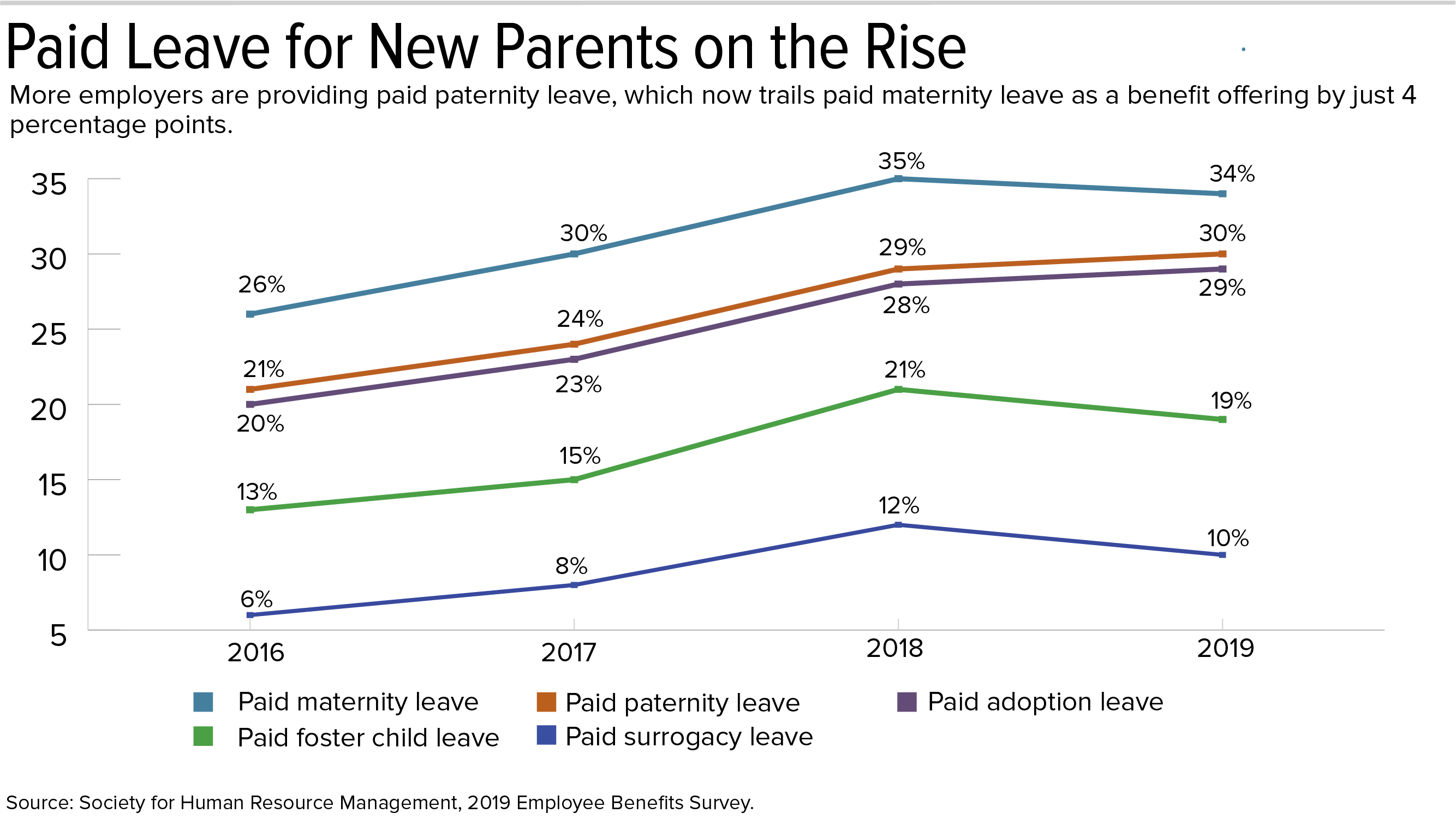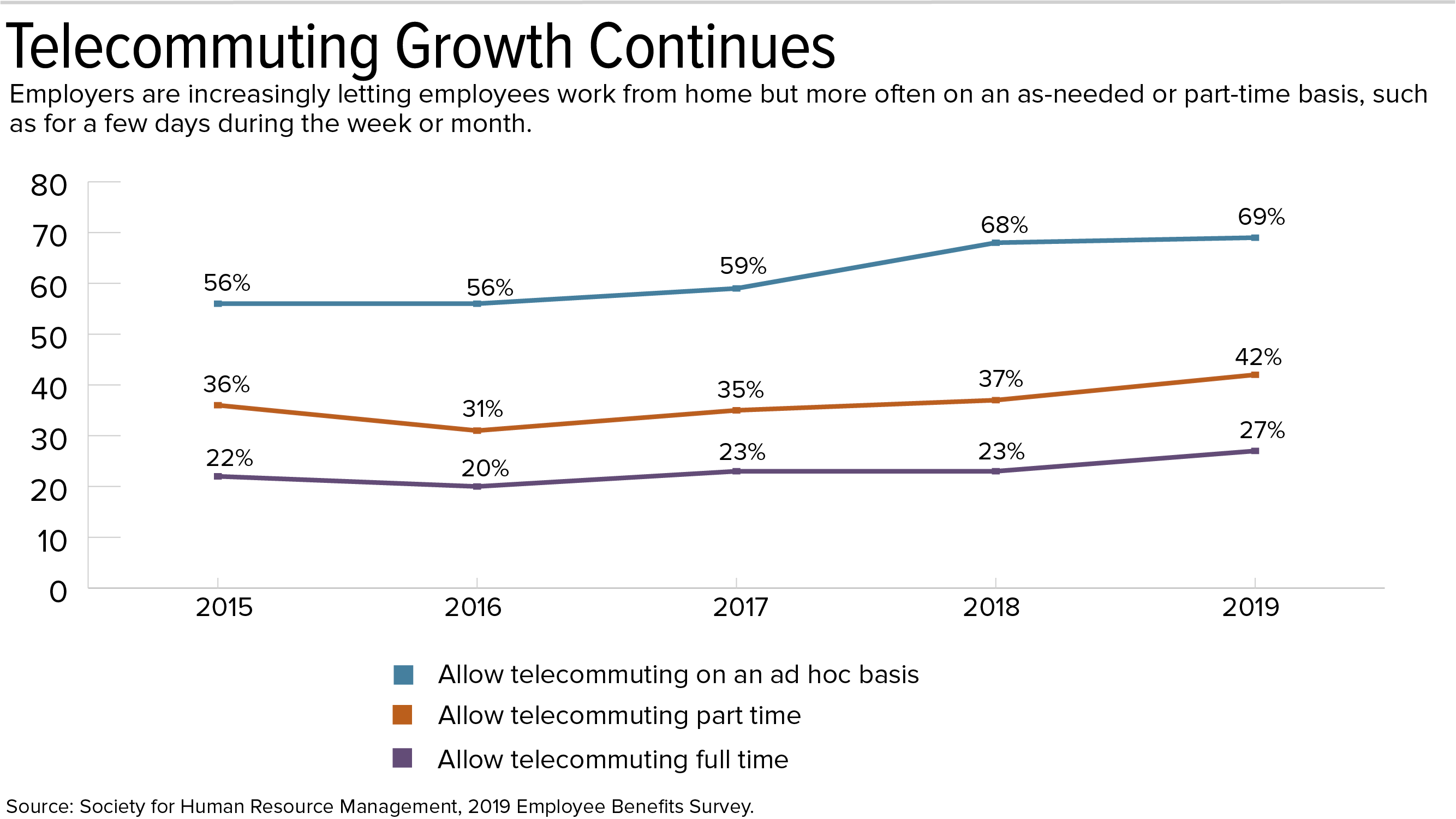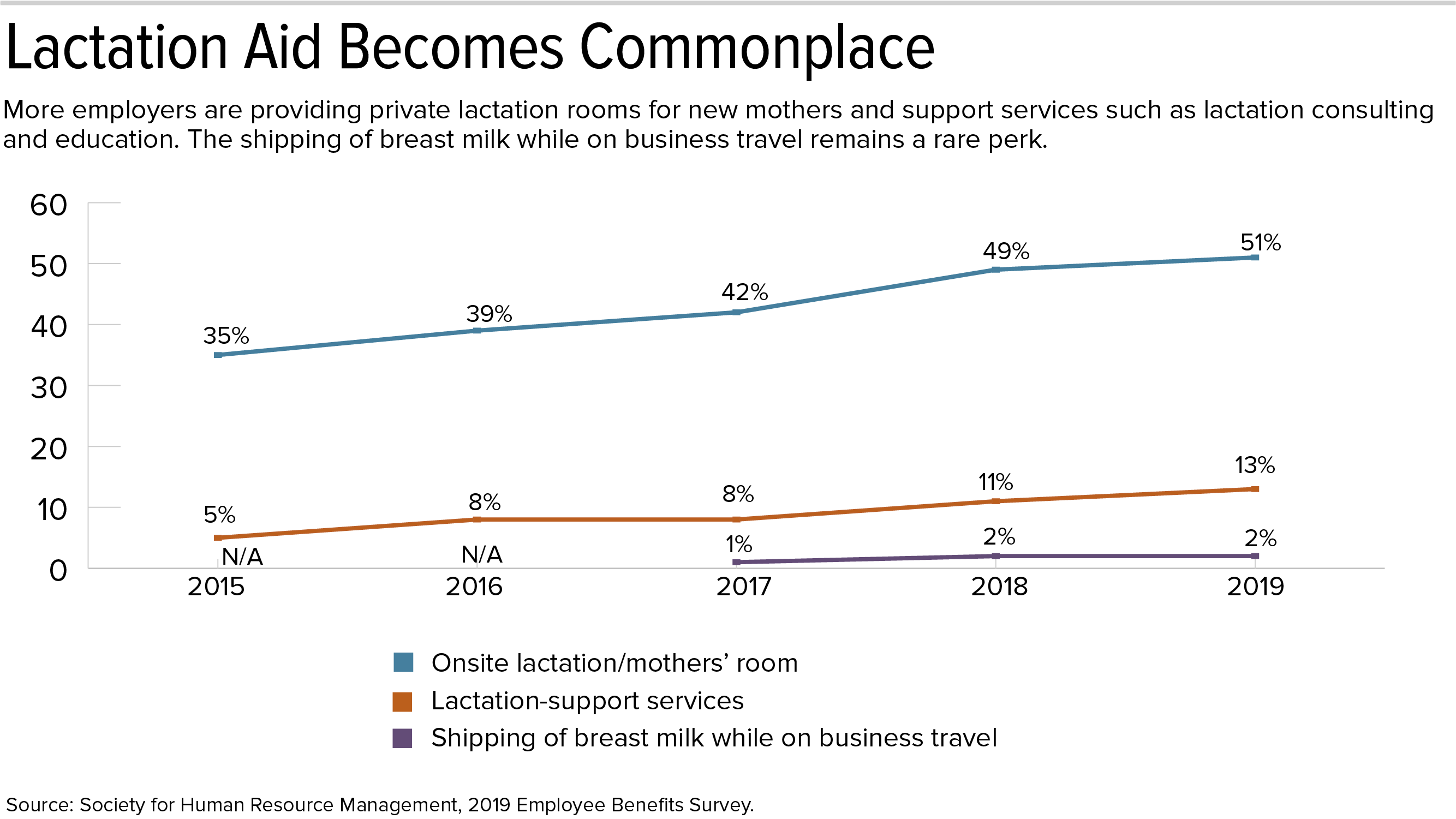Employers Boost Benefits to Win and Keep Top Talent
On the rise: student loan aid, telemedicine, telecommuting and lactation benefits

Employers are enhancing their employee benefits to recruit and retain highly qualified and high-potential employees in a competitive labor market—even as they balance those costs against the potential value to the organization.
That's according to data from the Society for Human Resource Management's (SHRM's) 2019 Employee Benefits survey, released June 25 at the SHRM 2019 Annual Conference & Exposition in Las Vegas.
The survey, conducted March 31 to April 30, 2019, with a random sample of SHRM members, received 2,763 responses. This year's results were presented in a series of online reports.
Ensuring Health
Eighty-six percent of employers that responded to the survey believe health-related benefits are very important or extremely important to their workforce, which may explain why only 3 percent have reported a decrease in these benefits, the survey revealed. But with health care costs continuing to outpace general inflation—and with the estimated cost of employer-sponsored health benefits approaching $15,000 per employee—employers remain cautious about spending in this area.
Among survey respondents:
- 20 percent indicated that their organizations' health-related benefits have become more generous in the last 12 months.
- 70 percent indicated that their health benefits have stayed the same.
This year, 20 percent of respondents offered one health care plan, while the majority (79 percent) offered two or more types of health care plans to employees. Many employers have opted to offer a high-deductible health plan (HDHP)—either linked or not to a health savings account (HSA) or health reimbursement arrangement (HRA)—instead of a traditional health plan or as an additional choice.
Preferred provider origanzation (PPO) plans continue to be the most popular health insurance option, available in 85 percent of organizations, followed by HDHPs linked to an HSA or HRA, available in 59 percent of organizations. Offerings of high-deductible health plans that are not linked with an HSA or HRA decreased by 10 percentage points since last year.
(Click on graphics to view in a separate window.)
"As the cost of health care continues to rise, employers will likely need to keep a close eye on the plans they are making available to employees to ensure they are offering their workforce what is most needed without breaking their budget," said SHRM Chief Knowledge Officer Alexander Alonso, SHRM-SCP.
“Health care costs are eating up a good portion of employer benefits budgets, so employers aren’t choosing to make many new changes,” he explained. “It’s really about incorporating the higher health care costs and doing what you can with the rest of your benefits budget to meet employees’ needs.”
Telemedicine (or telehealth) is one of the fastest-growing health care benefits, the survey showed. Telemedicine increased by 10 percentage points within the past year, and grew from 23 percent in 2016 to 72 percent this year.
Keeping Fit
In general, 64 percent of organizations that responded to the survey offer employees wellness resources, programs and events. The largest increase in any wellness benefit over the past five years has been the purchase of standing desks. Five years ago, only a quarter of employers that participated in the SHRM survey offered them. Now, 60 percent of respondents said they provide or subsidize the cost of switching from a sitting desk to a standing desk.
Fitness programs are a popular benefit. Around one-third of organizations are providing benefits—whether onsite or offsite, through a center, a class, a subsidy or reimbursement for fitness center fees—to help support employees' physical well-being. Offsite offerings remain slightly more common (32 percent) than onsite (29 percent).
Rewards or bonuses for completing certain health and wellness programs were offered by 38 percent of organizations this year and have been paid by between 38 percent and 41 percent of respondents since 2015.
Although the survey showed a decline in preventive programs specifically targeting employees with chronic health conditions, dropping to 24 percent of respondents, down from 40 percent in 2015, there’s a possible explanation for the falloff. "More insurers now integrate chronic disease management into their health plan services," so employers may not need to provide disease management as a separate benefit, said Liz Supinsky, SHRM’s director of research products.
Saving and Investing
Nearly all of the employers surveyed offer employees one or more retirement plans to help them save for their financial future. Defined contribution plans remain the most common; 93 percent offer a traditional 401(k) or similar plan (with contributions in pretax dollars and withdrawals taxed during retirement) and 59 percent offer an optional Roth 401(k) or similar plan (with contributions in after-tax dollars and withdrawals tax-free during retirement.)
"Every single 401(k) plan should have a Roth option" because for most plan participants tax-free growth and tax-free withdrawals during retirement will more than offset contributions made with after-tax dollars, said Jeanne Fisher, senior 401(k) advisor at ARGI Financial Group in Bowling Green, Ky. Adding a Roth account feature "doesn't cost anything beyond the cost of a plan amendment," Fisher noted, during a presentation at the 2019 SHRM annual conference.
Employer matches for 401(k) plans held steady, with about 75 percent of surveyed organizations offering a match over the past five years.
Automatic features, requiring employees to affirmatively opt out of plan enrollment or contribution increases, are more common. The survey found that this year:
- 42 percent of organizations automatically enrolled new employees into a defined contribution plan, up from 38 percent last year.
- 22 percent automatically enrolled current employees who were not participating in the plan, up from 20 percent.
- 19 percent automatically escalated employees' salary deferral contributions, up from 18 percent.
"Design enhancements that leverage behavioral finance insights such as automatic enrollment, coupled with generous employer-matching contributions, are helping build a more financially secure retirement for American workers," said Hattie Greenan, director of research and communications at the Plan Sponsor Council of America, an association of benefit plan sponsors.
However, "auto enrollment without auto escalation is a double-edged sword," said Fisher, because automatic enrollment default savings rates are commonly 3 percent to 6 percent of employees' pay—"significantly lower than what the average American needs to be saving for retirement," which is typically at least 10 percent to 15 percent of pay throughout their careers, and often 20 percent or more if employees have delayed saving for retirement.
Another key component of financial fitness is advice about money matters. This year, the survey showed that:
- 57 percent of respondents offered retirement planning or investment advice to employees online, in a group classroom or one-on-one.
- 36 percent offered nonretirement financial advice.
- 18 percent offered credit counseling services.
[SHRM members-only toolkit: Designing and Managing Flexible Benefits (Cafeteria) Plans]
Paying Off Student Loans
Employer-provided student loan repayment as a benefit has doubled since 2018 from 4 percent to 8 percent.
"As of December 2018, more than 44.7 million borrowers owed $1.5 trillion in student loans—a sum that exceeds the gross domestic product of all but a dozen countries around the globe," Alonso said. "In a competitive labor market, student loan repayments can be a valuable tool to recruit highly qualified candidates and to keep talented employees."
SHRM's director of policy engagement, Chatrane Birbal, explained, "While more employers could offer student loan debt repayment as a benefit, an obstacle is that the payments are considered taxable income for the recipients, and employers can't claim a deduction for these payments."
In February, members of Congress reintroduced the Employer Participation in Repayment Act, which would let employers give tax-free student loan assistance of up to $5,250 a year per employee—the same amount that Section 127 of the U.S. tax code now treats as tax-exempt for employer-provided tuition assistance. SHRM supports enacting this legislation.
In an indication of how shielding benefits from taxes might affect employers' willingness to offer them, more than half of the survey respondents (56 percent) provide tax-free tuition assistance to employees, up from 51 percent last year.
Taking Time Off
The vast majority—over 90 percent—of respondents offer some type of paid leave to employees. In 2019, most organizations are doing this through a paid-time-off bank that combines both vacation and sick-leave time.
Employers continue to offer generous paid leave for new parents, with about a third (34 percent) of organizations offering paid leave to mothers and slightly fewer (30 percent) to fathers.
One organization in five reported offering family leave, paid or unpaid, beyond what is required by both the federal Family and Medical Leave Act and state mandates.
"Organizations with workforces made up primarily of adults under 40, or those looking to recruit greater numbers of younger workers, will likely see even stronger pushes for paid parental and family leave," said Alonso.
As remote work becomes more popular, telecommuting is increasing.
Other benefits promoting work/life balance, including compressed and four-day workweeks, saw minor increases in 2019. "With heavy workloads, long and unpredictable work hours and limited time with family and friends, alternative schedules could be an attractive option," Alonso said.
Phasing Retirements
Informal phased retirement programs are now offered by 15 percent of respondents, up from 10 percent in 2015, while formal phased retirement programs fell to 6 percent, down from 8 percent. over the same period
One reason employers are more likely to offer informal programs is that they prefer to limit phased retirement opportunities to high-performers and those with in-demand skills, and believe that an ad hoc approach makes that easier.
An informal approach, however, could pose legal issues regarding nondiscrimination based on who is offered the right to shift to part time, although this hasn't been tested in the courts, benefits advisors have noted.
Being Family-Friendly
As organizations look to recruit and retain younger workers, HR leaders are expanding other benefits for new parents. For example, more employers are providing lactation or mothers' rooms for breastfeeding, which are separate areas that go beyond Affordable Care Act requirements that employees be "shielded from view" and "free from intrusion" during their breaks. Support services, such as lactation consulting and education, have also been increasingly offered, although shipping breast milk home for mothers who are on business travel hasn't yet become mainstream.
"Dignified lactation spaces and the cultural support needed to continue breastfeeding after maternity leave is still a challenge for the majority of working women," said Sascha Mayer, CEO and co-founder of Mamava, the inventor of the first lactation pod and expert in lactation space design.
Declining Partner Benefits
Since a 2015 U.S. Supreme Court decision legalized same-sex marriages in all 50 states, there has been a decline in offering benefits to employees' unmarried partners. Many employers had offered partner benefits as a way to treat all employees equally when in many states same-sex marriage was not recognized. Having offered benefits to the same-sex partners of employees, many felt it was only fair to do the same for unmarried opposite-sex partners.
This year, 10 percent of survey respondents offered domestic partner benefits other than health care to same-sex or to opposite-sex unmarried partners, down from 15 percent last year.
Among the reasons some organizations have given for continuing to offer domestic partner benefits is a desire to recognize all types of families.
*Only benefits that the survey has tracked for the past five years are listed. | ||||||||||||||||||||||||||||||||||||
Being Socially Conscious
Employer-provided charitable donations are down over the past five years, but more than one-quarter of organizations now provide paid time off for volunteering to meet the demands of workers who value corporate social responsibility.
Offering the Right Benefits Mix
Companies are conducting extensive research on their specific employee demographic to find a unique benefits package that resonates with the majority of their employees’ needs and stage of life.
“Finding the right combination of benefits that appeals to a multigenerational workforce can be a challenge,” Alonso said. “But if you know a good portion of your workforce are Baby Boomers with aging parents, you might choose to beef up your caregiving benefits and flexible scheduling policies. On the other hand, if you have a young demographic, offering benefits like student loan repayment could be the way to go.
An organization run by AI is not a futuristic concept. Such technology is already a part of many workplaces and will continue to shape the labor market and HR. Here's how employers and employees can successfully manage generative AI and other AI-powered systems.
